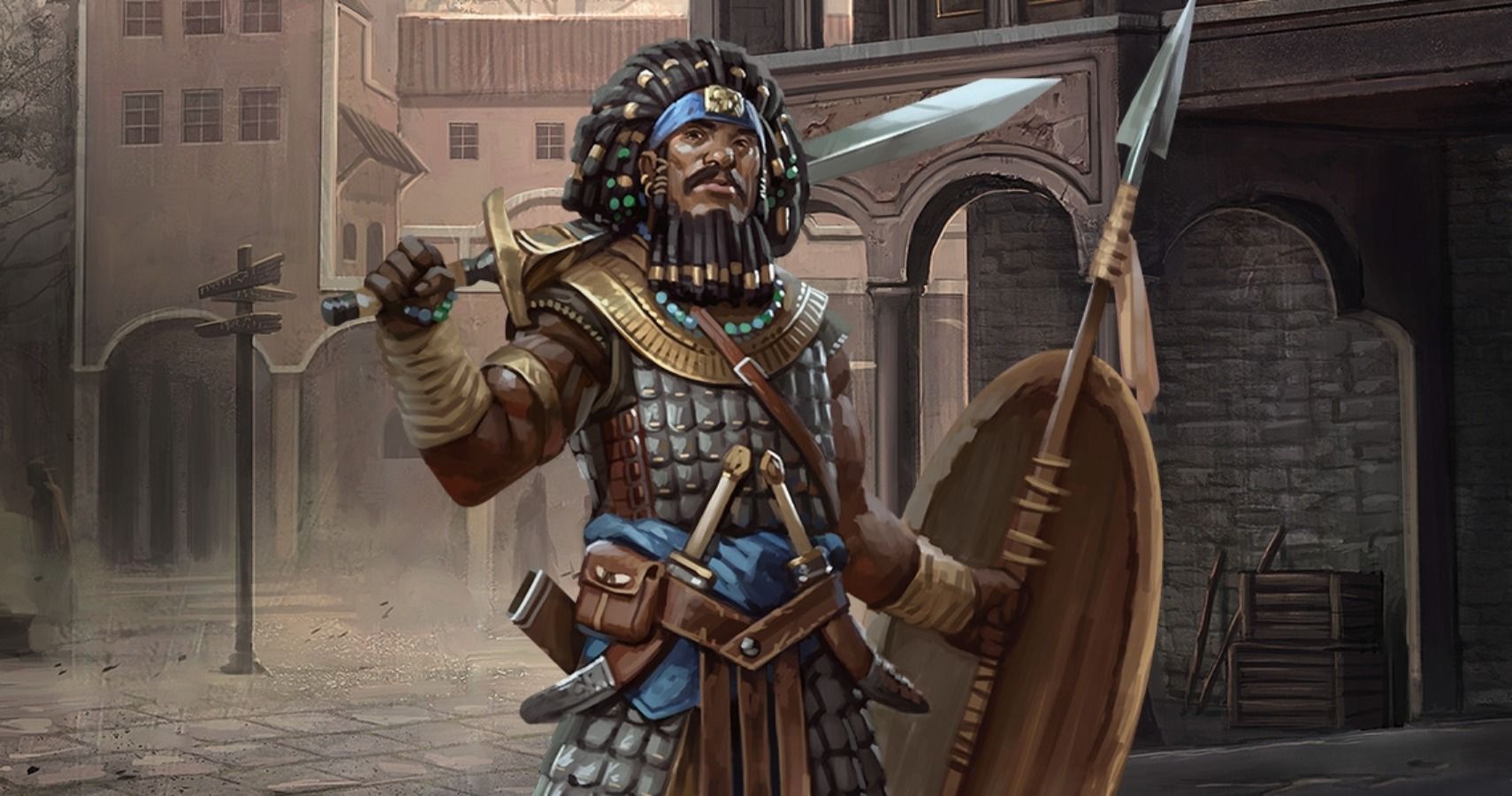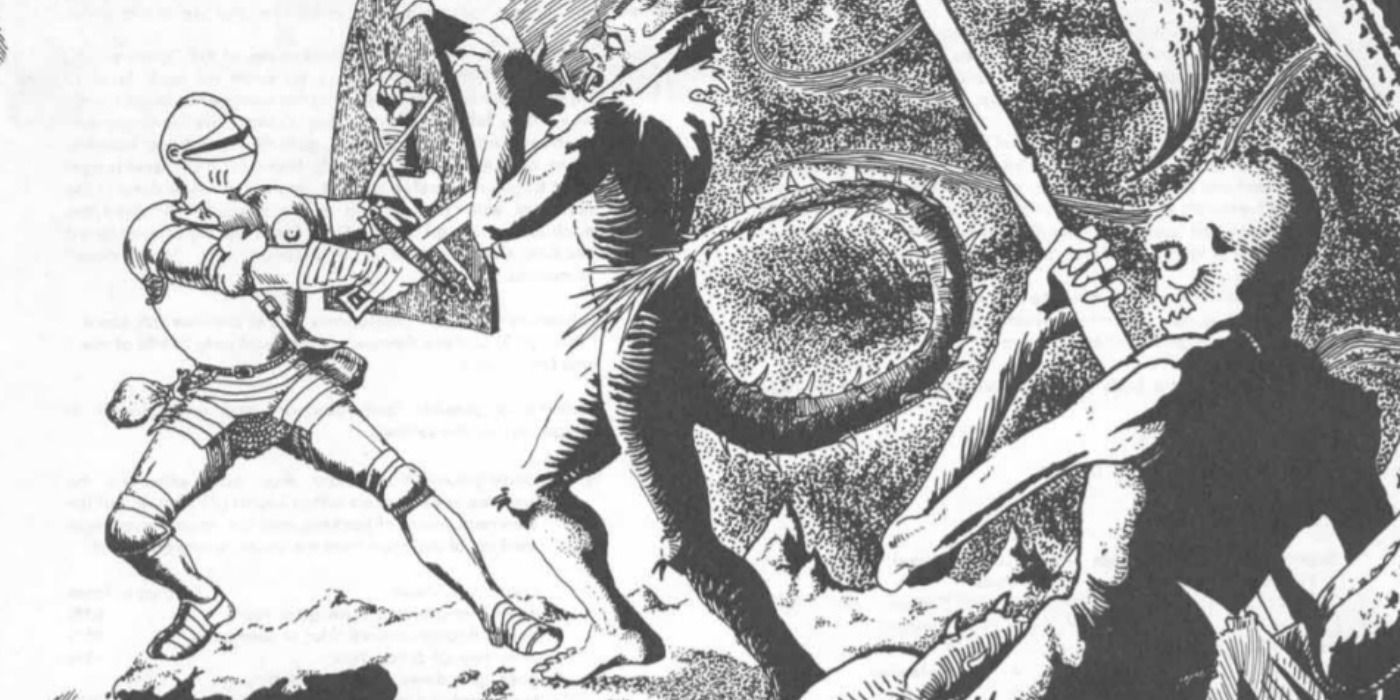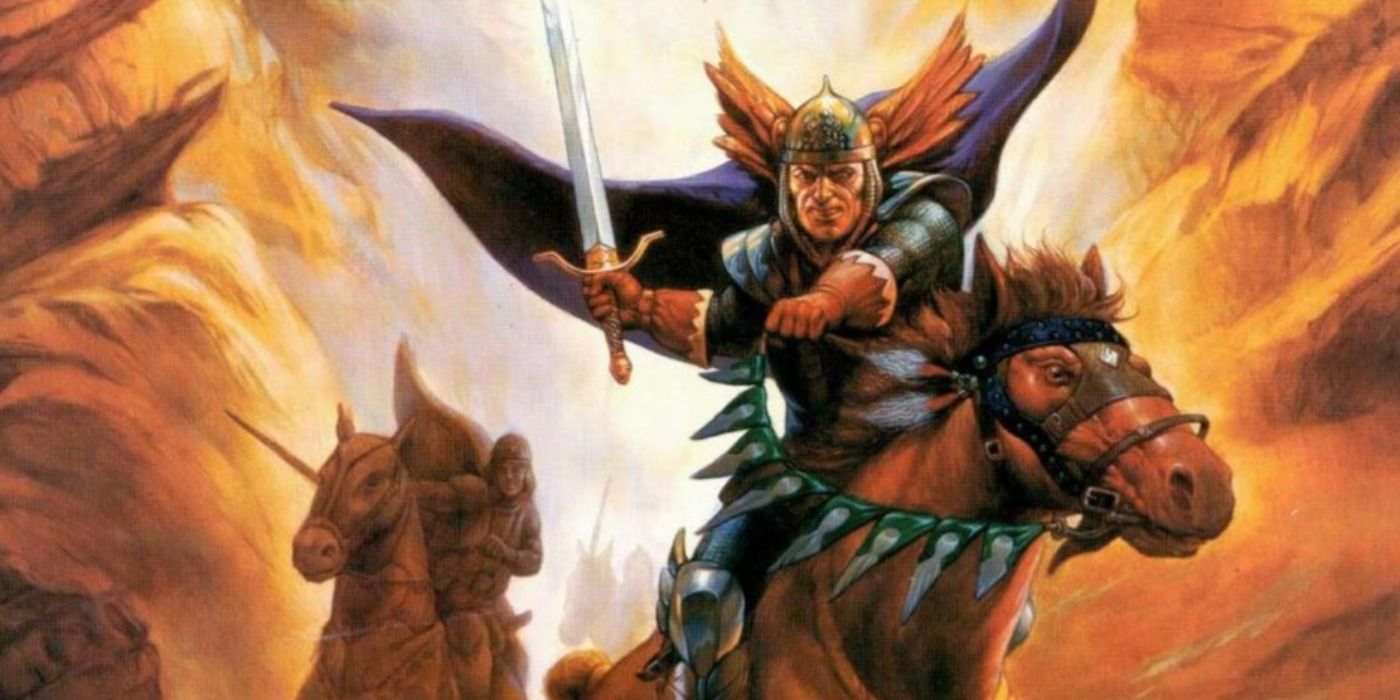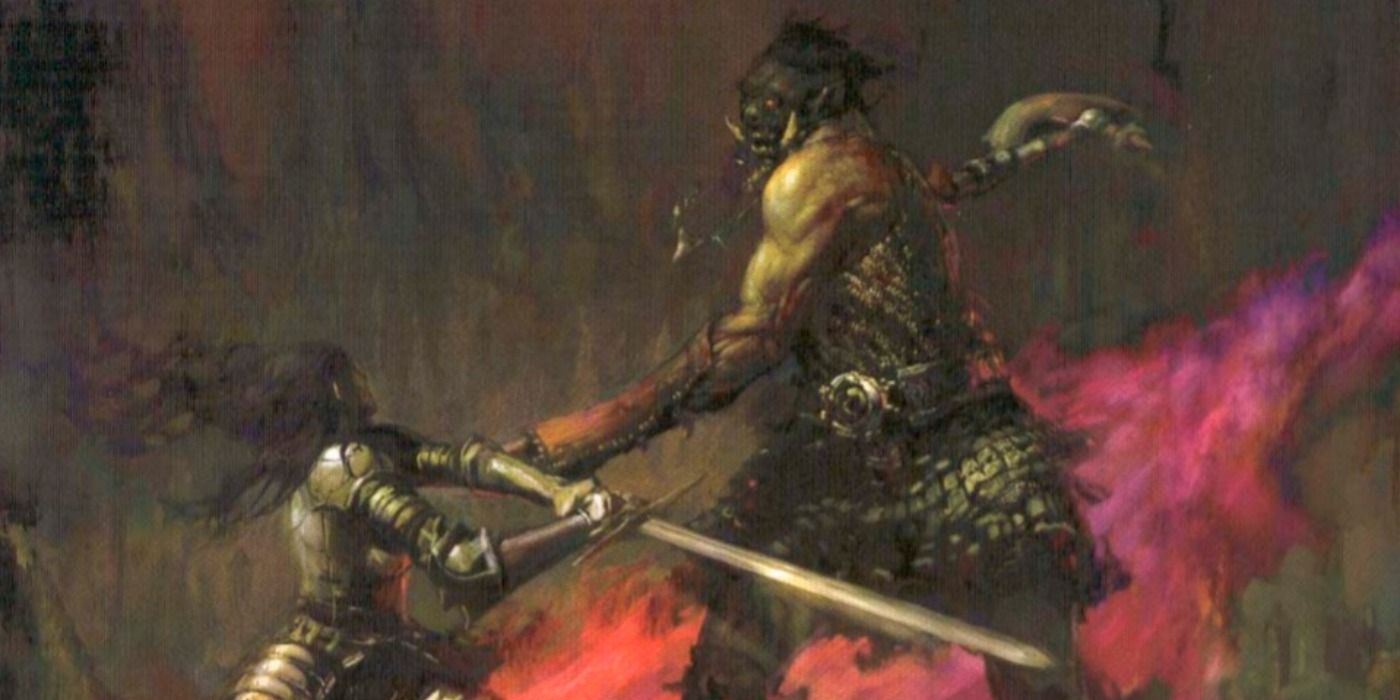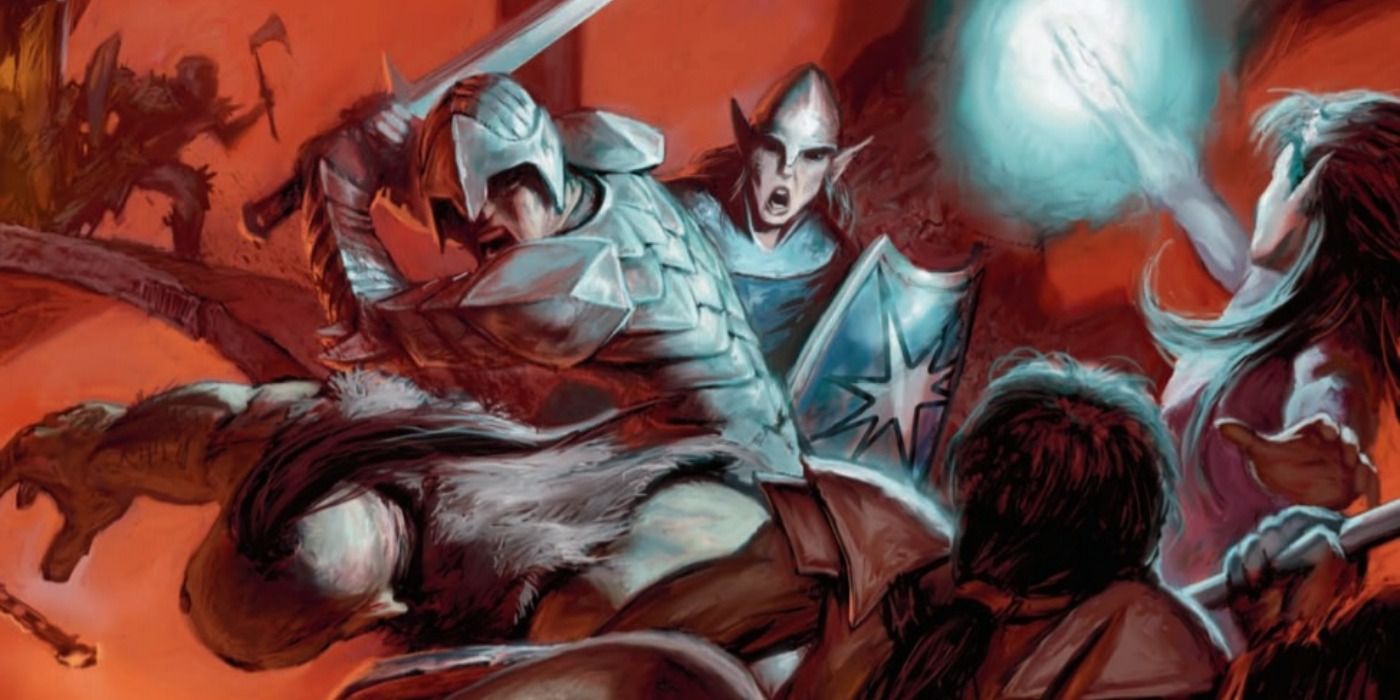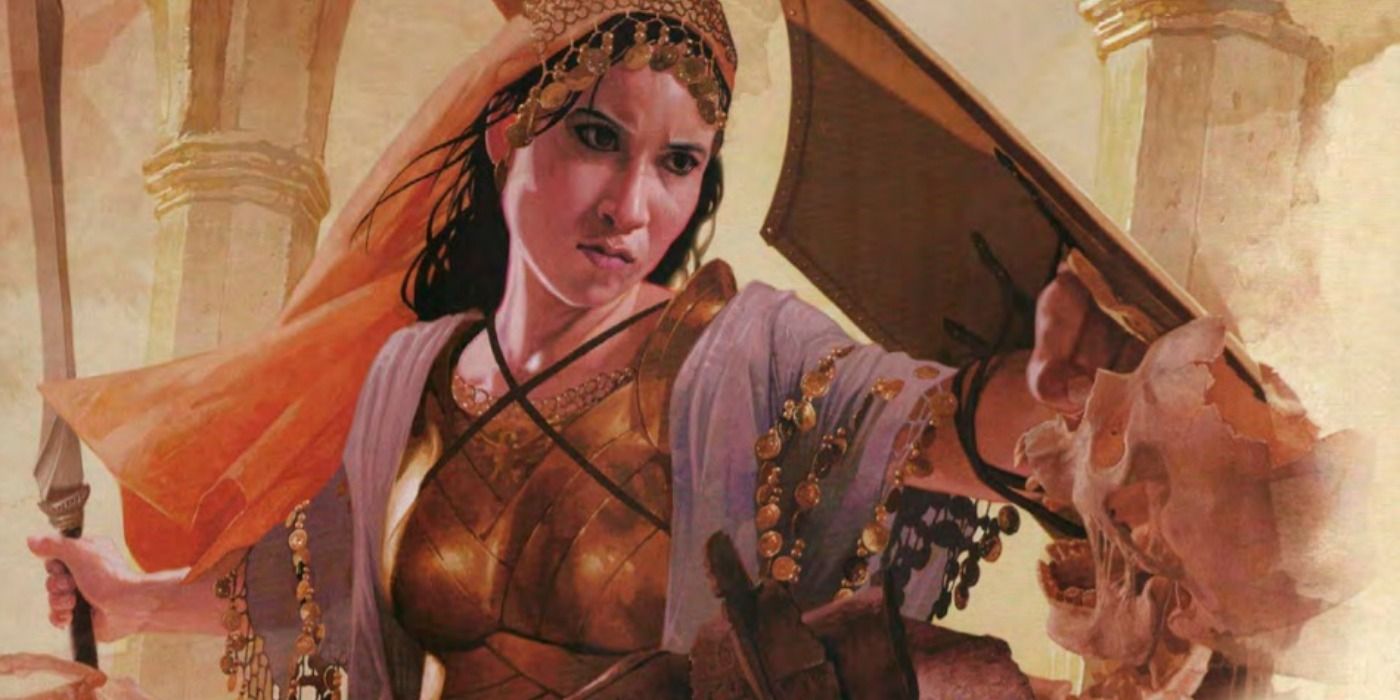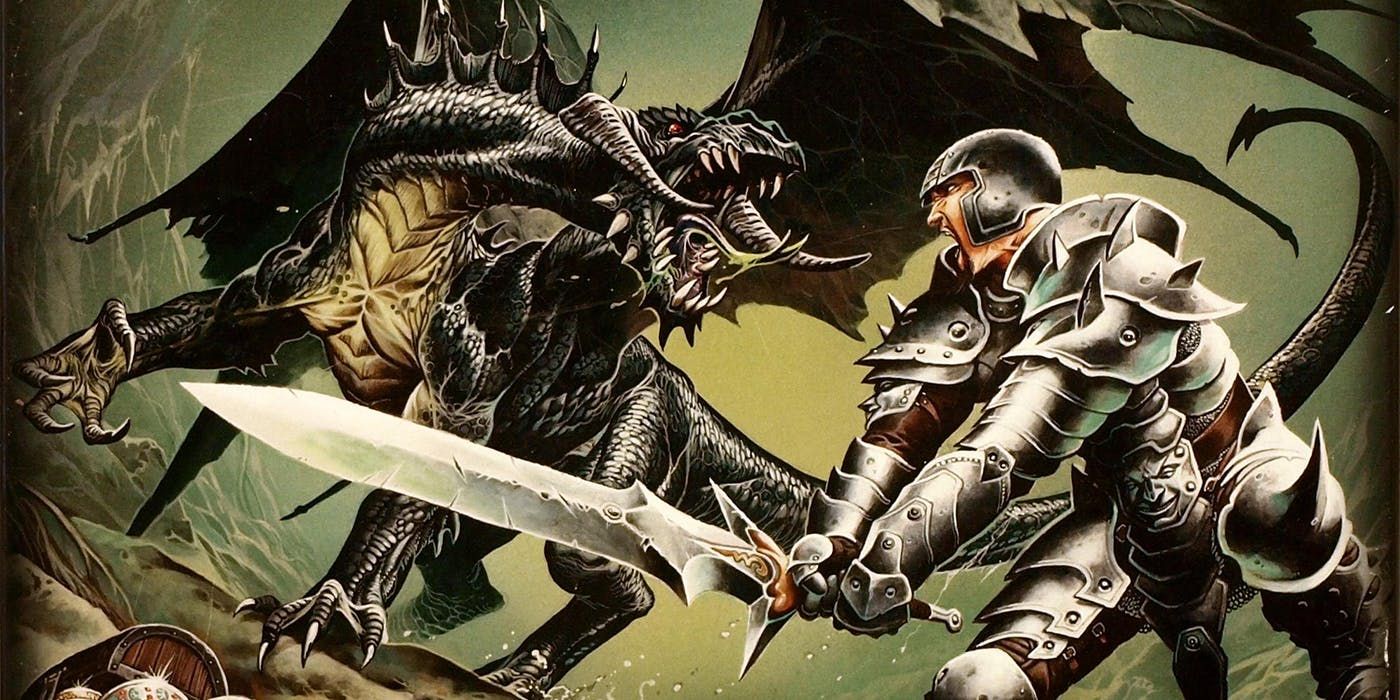The fighter is one of the staple classes in Dungeons & Dragons, and its simplicity in terms of abilities has made it the most flexible in terms of its concept. What makes the idea of the fighter class so good is that a number of different concepts can fit under its a banner; a noble knight in a suit of armor, a mafiosa with a crowbar, a gladiator who fights for the entertainment of the crowd, a grizzled mercenary who fights for coin - all of them can be considered fighters.
The role of the fighter is to be on the front lines of combat and to take the hits that their squishier spellcasting companions cannot take. The nature of the fighter class has remained the same, but its capabilities have changed a great deal over the history of Dungeons & Dragons. It's time to break down the most basic class in Dungeons & Dragons and see how it has changed over the past forty years.
1st Edition - The Silver Tax
The original version of the fighter was free of the class/race restrictions that affected other classes. The other warrior classes like the cavalier, paladin, and ranger had stronger abilities, but they also had unique restrictions, such as the cavalier's inability to escape from battle. What the fighter lacked in special skills, it made up for in the flexibility of its design and the freedom in which players could mold their character.
Fighters were the only class to receive weapon specialization as a skill, but this amounted to little more than +1 to hit/+2 to damage with a specific type of weapon. When a fighter reached level nine, they could build a stronghold and attract mercenaries and serfs, the latter of which would pay the fighter seven silver pieces a month. The price of actually building and maintaining a stronghold would outmatch the value of the taxes unless the player was willing to engage in a game that lasted a decade or so, which meant that the stronghold gimmick wasn't a good one for the class.
2nd Edition - The Dart Knight
The fighter class was mostly unchanged in the second edition of Advanced Dungeons & Dragons, with its main gimmick still being that it was the only class to receive weapon specialization and being free from the restrictions of other classes.
What made the fighter so interesting in the second edition of Advanced Dungeons & Dragons was one especially broken build and a few overpowered kits.
In Advanced Dungeons & Dragons, a throwing dart only deals 1d3 damage, but the player adds their strength bonus to the damage. If a fighter chooses darts when receiving weapon specialization, then they will gain the ability to throw six of them per round (or more if they are under the effects of haste). If the player can find some magical darts, then they will be dealing an insane amount of damage per turn.
The Book of Elves also featured two of the most broken fighter kits in the game: the archer, which could fire three arrows every round (so long as they didn't move) and the bladesinger, which could cast spells with one hand.
The fighter class was commonly used in multiclassing, with the fighter/thief, fighter/mage, and fighter/cleric offering unique ways to improve those base classes, while further differentiating the demihuman characters from their human counterparts.
3rd Edition - Feats Galore
The third edition of Dungeons & Dragons was when the fighter class really started to shine. The class/race restrictions of the earlier editions were now gone, but fighters still remained the most customizable and flexible classes in the game, due to the fact that they received so many feats.
Feats are special abilities that exist outside of character classes and are gained every few levels regardless of class choice. A few classes gained bonus feats and the whole gimmick of the fighter was that they received nothing but feats throughout their run.
Fighters went from being the most boring class in terms of abilities to being the most interesting, as they now had access to more gimmick moves and special powers than any other class in the game (with the exception of the benefits granted by magic spells). The fighters became even more distinct as more sourcebooks were released and the list of their potential abilities grew.
4th Edition - The Best Defense
The fourth edition of Dungeons & Dragons broke classes down into their combat roles, with fighters being defined as Defenders. The role of the fighter is to keep the enemy occupied while the other characters do their thing, which was something that the fighter excelled at.
Fighters in fourth edition had the ability to penalize enemies for not focusing on them, which was reflected in their amazing Combat Superiority ability that stopped enemies from moving if they are hit by an attack of opportunity. The fighters aren't just restricted to defensive options, as they also hit hard against single opponents, which means that enemies cannot avoid them for too long.
The flexibility of the fighter from previous editions is also here in terms of weapon selection, as the choice of weapon helped to define the abilities that the player should pick going forward and also molded the kind of role they took on the battlefield.
5th Edition - Time For Battle
The current edition of Dungeons & Dragons has been kind to the fighter class. The Second Wind ability from the fourth edition of Dungeons & Dragons is now unique to the fighter class, they can take additional actions with the Action Surge ability, and they gain more stat boosts than any other class.
When a fighter hits third level, they must choose their Martial Archetype. The version of the fighter from the Player's Handbook can choose between the battle master, the champion, and the eldritch knight.
The champion seems to exist for new players, as its abilities are limited to passive buffs that are always functional. The concept of the eldritch knight is a good one, but the fighter needs to have a high intelligence stat to make it worthwhile and that is usually a dump stat for the class.
The real standout of the fighter archetypes is the battle master, which has some of the best abilities in the game. A battle master has access to moves like Disarming Strike (the enemy has to make a saving throw or drop an item they are holding), Parry (use your reaction to lower the damage dealt by an attack), and Trip Attack (the enemy has to make a saving throw or be knocked prone). The fact that the superiority dice used to power these moves are restored after a short rest only makes the battle master more effective in combat than its contemporaries.
Forever Fighting
Fighters started out as one of the most boring Dungeons & Dragons classes, especially as they were quickly cast into the shadow of their spellcasting companions. The creators of each new edition have been kinder to the fighters and they have only grown more interesting over time. Fighters may not have had the flashiest powers over their run, but the loose concept of the class make it easier and easier for players to create the kind of character that they want without being held down by the restrictions of the rules.

